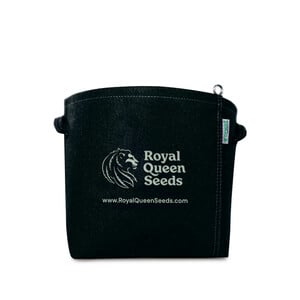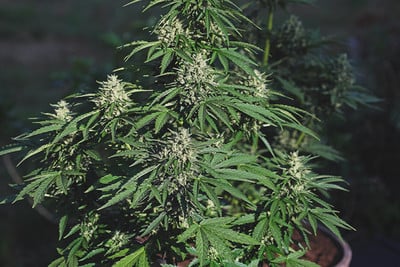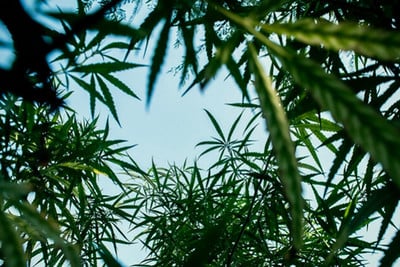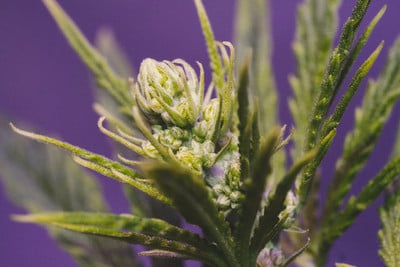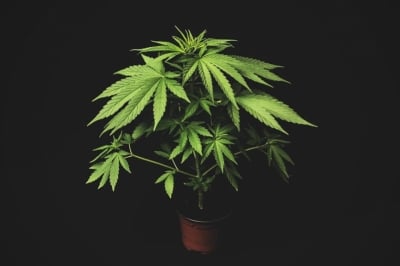.

How to Avoid the Threat of Cannabis Light Pollution
When growing photoperiod cannabis plants, darkness is just as important as light, and protecting your crop from light pollution is critical. In this article, we explain how to avoid the issue of light pollution indoors, outdoors, and in a greenhouse.
When growing cannabis, we pay a lot of attention to ensuring plants get ample amounts of strong light. Light is one of a plant’s main fuel sources, and consistent illumination is essential to achieving large yields of potent bud. What gets less attention is making sure that plants also receive enough proper darkness, which is equally important to (photoperiod) plants' healthy development as light.
Cannabis plants are so sensitive to light that even light pollution from artificial lights can disrupt their dark period and throw them off. In this article, we look at how to protect plants from light pollution to ensure healthy growth.
Contents:
What Exactly Is Light Pollution?
Light pollution is a broad term that generally refers to artificial light that reduces natural levels of darkness at night. Most commonly, it’s used in reference to urban areas, where the sheer density of artificial light at night blots out many, if not all, of the stars. If you’ve ever looked at a cityscape at night from outside the city, you’ll probably notice an orange glow humming over it—this is light pollution.
In relation to cannabis, there are two ways of looking at light pollution. The first is that large, commercial operations might themselves contribute to light pollution, even in rural areas. A greenhouse full of high-powered lights will also pollute the surrounding areas when darkness autumns—this is cannabis light pollution. However, given that most of our readers aren’t large-scale commercial growers, this is fairly irreverent in the context of this article.
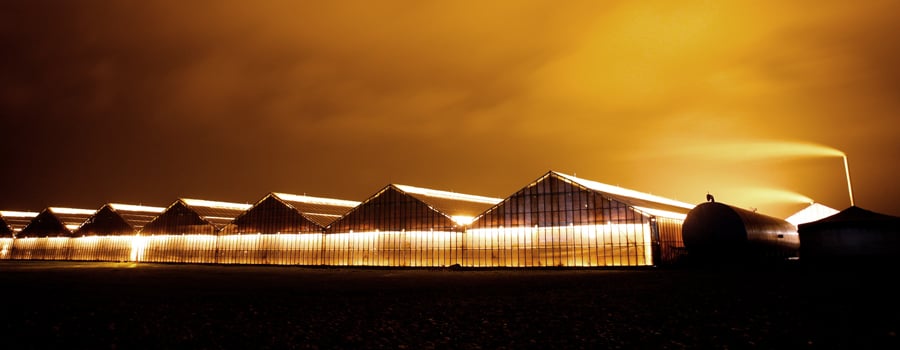
What’s more relevant is the effect that ambient light pollution can have on small-scale cannabis grows, by disrupting a plant’s dark period. This is most common when growing outdoors or in greenhouses, but light leaks in grow tents are also problematic.
The reason that light leaks can cause cannabis plant issues is that cannabis is extremely sensitive to light; it uses light levels and intensity to judge the season, and alters its behaviour accordingly.
How Sensitive Is Cannabis to Light?
The following section will exclusively discuss photoperiod cannabis plants, as autoflowering plants’ life cycles aren’t dictated by light exposure (so long as they have enough to grow).
Photoperiod cannabis plants don’t just use light for photosynthesis, but also to judge the season, thereby determining which growth stage they should be in. Long hours of light imply midsummer, and the plant will vegetate during this part of the year and do most of its growing. Once the days become shorter, it senses autumn is coming and begins to flower, ready to reproduce before it dies come winter. Because of these behaviours, it’s crucial to give cannabis plants the correct ratio of light and dark depending on their stage of growth.
It’s not just about giving plants enough light; they also need enough true darkness. Problems that can occur if darkness is interrupted include:
- Reverting back to the vegetative stage
- Becoming a hermaphrodite
- Stunted growth or even death (in severely disrupted plants)
- Stalling/extended grow time
- Reduced yield
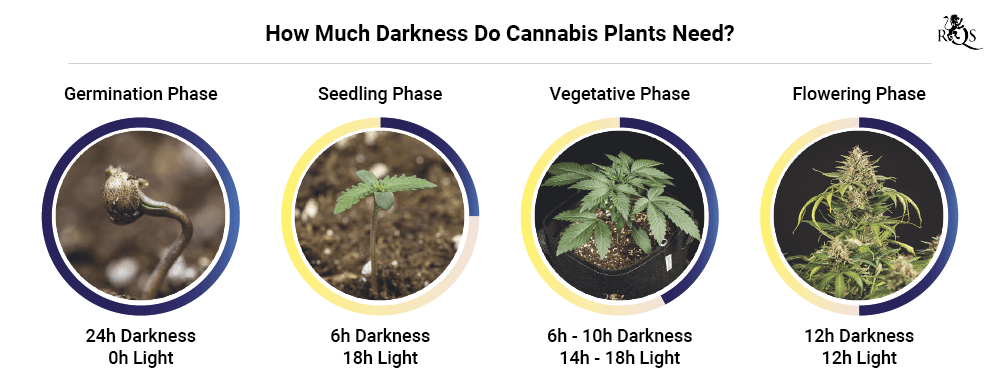
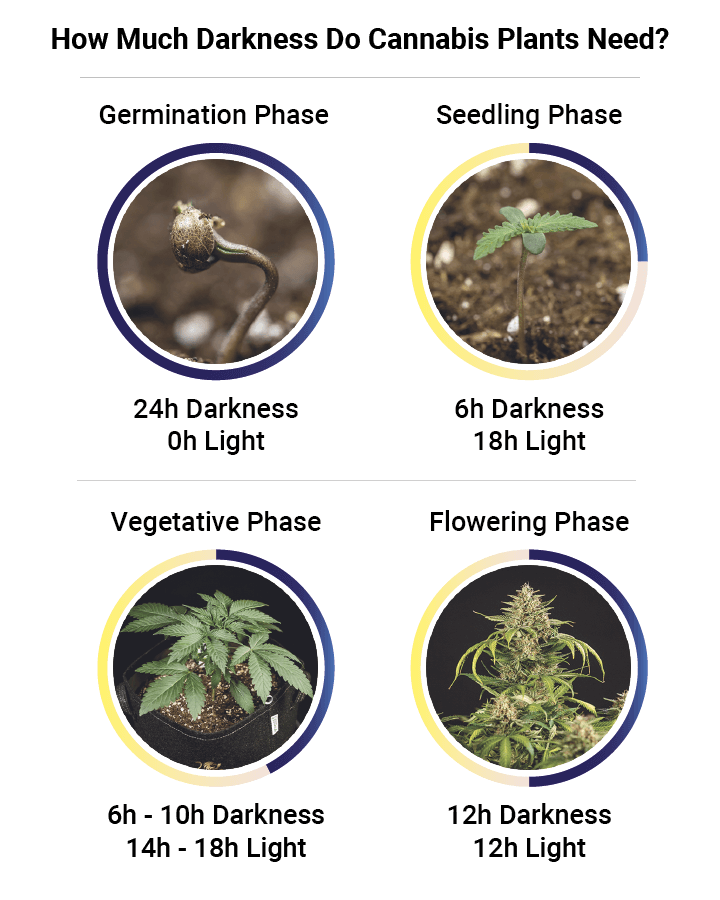
Managing Light Pollution: Indoor Cannabis Grow
Fortunately, there are steps we can take to ensure that cannabis plants get ample darkness. Growing indoors provides the easiest environment in which to control the light and dark cycle. Here’s what you can do.
Use a Timer
When growing indoors, you can make your life much easier by pairing a timer with your lights. This means that they will turn on and off at the right time every day. This way, there’s no danger of you forgetting to switch them off at night and disrupting your plants. In addition to ensuring that external light doesn't get in when growing indoors, you should also make sure that your lighting setup itself is consistent and working correctly!
Seal the Grow Space
Once you’ve sorted your lights, you need to seal the grow space, be it a tent or room, off from external light sources. There’s no point investing in lights and a timer if light creeps in through curtains or openings in the body of the grow tent.
If you’re growing in a room, make sure windows and doors are totally sealed. It’s possible that even a little artificial light coming in through the bottom of a door can throw off a plant’s photoperiod, so stand inside with all the lights turned off and check if light is leaking in from anywhere.
If you’re using a grow tent, then they should be fully sealable against light anyway. However, it may be that one of the doors or vents doesn’t seal properly, or maybe your tent is past its prime and has a little tear. When using grow tents, duct tape is almost always the answer for sealing them against light leaks.
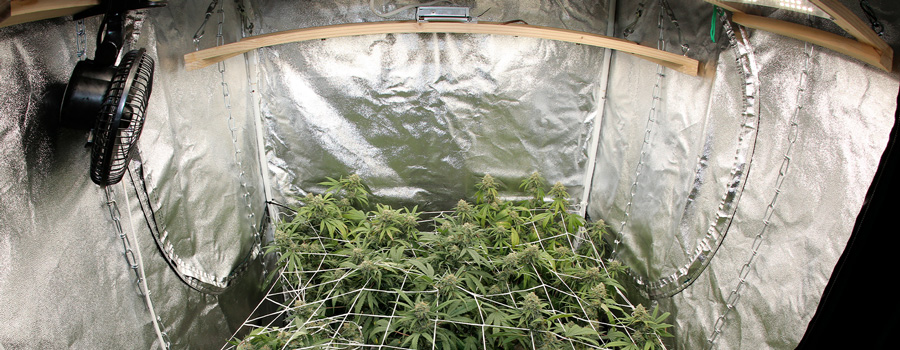
Managing Light Pollution: Outdoor Cannabis Grow
Outdoor cannabis grows can be more problematic when it comes to light pollution. If you grow in a city, or maybe even just have a street light looming over your garden, then these can cause problems. Neighbours who leave lights on all night can even disrupt a cannabis plant's photoperiod. So what can you do?
Choose the Best Growing Space
First things first, try to choose the best space to start with. This means a space that gets at least eight hours of direct light during the day, and as much darkness as possible at night. It’s difficult to quantify exactly how much darkness plants need and how much light will stop flowering outdoors—it doesn’t need to be pitch black. One way to test if a space is suitable is to go outside with a magazine and see whether you can read the larger writing inside it. If you can, it might be better to find a darker spot. And if you can read the smaller text, you definitely need more darkness!
Grow in Pots
Of course, not all of us have outdoor spaces that are dark enough, but all is not lost. If you grow your plants in pots, then you can place them in direct sun during the day and then move them to more darkness during the night. Maybe this means moving them to a darker corner of your garden, or perhaps it means moving them indoors, into a sealed room.
This is much easier if you only have a couple of small to medium-sized plants. It will soon become unworkable if you’re growing many monsters.
Build a Blackout Tent/Shelter
You could also build or buy a blackout tent/shelter. These are mobile structures that can be placed around a plant during the night and removed each morning; they ensure that your plant is entrapped in complete darkness during the night. In fact, they aren’t just helpful for combating light pollution, but can also be used to induce flowering earlier in the summer.
Alternatively, you can invest in a greenhouse, which makes ensuring darkness much easier. See below.
Managing Light Pollution: Greenhouse Growing
Greenhouses are a perfect middle-ground when it comes to growing weed. They can utilise natural light in the day, can be supplemented with artificial light if necessary, and can be easily covered to create a totally dark environment.
If you’re growing outdoors, you should consider investing in a greenhouse, especially if you’re having problems with light pollution.
Use a Blackout Tarpaulin
If you’re growing in a greenhouse, whether big or small, there’s one very simple solution against light pollution: an opaque tarpaulin!
Once it becomes time for your plants to sleep, simply pull a blackout tarpaulin over the greenhouse. That’s it. So long as the tarpaulin properly blocks light and covers the whole structure, then it will do its job perfectly.
For those who want to grow outdoors, but anticipate problems with light during the night, a greenhouse and an opaque tarp can make for a cheap, easy, and highly effective solution!
What Are Your Options if Light Pollution Is Unavoidable?
If, for some reason, it’s inevitable that you’re going to have issues providing ample darkness during the night, then all is not lost; you can still cultivate cannabis. But what can you do?

While autos still need light to photosynthesise, they do not rely on light cycles to move through their life cycle. Rather, they bloom of their own accord after a genetically predetermined amount of time, and no amount of light will stop them entering the flowering stage and producing bud. In fact, you can successfully grow autoflowers beneath 24 hours of light a day from seedling through to harvest.
So if you can’t guarantee enough darkness at night, just go for autoflowering plants. These days, they’re almost as productive and potent as photoperiod plants anyway, and make for a much easier grow overall. Not only are they more lenient when it comes to light and dark cycles, but they're generally less effort to grow in general—and they’re much faster.
The Importance of Preventing Cannabis Light Pollution
If growing photoperiod cannabis plants, it’s essential that they get enough darkness at night. During the vegetative stage, this means around eight hours of uninterrupted darkness. In the flowering stage, 12 hours is necessary. Don’t underestimate how important this is, and how wrong the flowering stage can go if your plants are exposed to light pollution.
Among the solutions above, find a way to keep your plants in complete darkness. And if not, don’t stress, just opt for autoflowering plants.


























